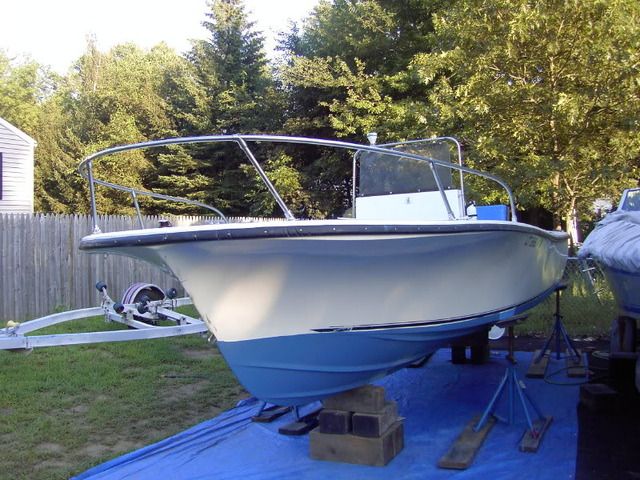Re: Magic Minimum Number
I have heard?on both this board and others?marine sages state emphatically that the minimum vessel length to take on big water starts at some magic point.
They insist that to venture off-shore aboard a vessel of less than a specific length is not only foolhardy but quite possibly suicidal. What is that magic minimum number? And whatever the answer, isn?t it absolutely arbitrary?
If you believe 20? is the magic minimum number, those going out in a 19? are what? Crazy?
If you believe that magic minimum number is 24??what about those in the 23?footers? Nincompoops, one wave away from being swamped, capsized and drowned?
Mathematically, I find it hard to believe that off-shore safety begins at some magic number. It would seem to be more progressive, as in a boat of 20? would be half as stable as one of 40? and a 40? half as stable as one of 80?.
So, in your opinion, what is the magic minimum number? And more importantly, why?
There is no magic length. I would rather be in a 13 foot BW skiff 30 miles offshore than in a 23 foot Bayliner bow rider one mile offshore. An 18 foot Grady cc might well be safer offshore than a 26 foot lake cruiser with inadequate pumps and bilges that rapidly collect water. One is meant and intended for the purpose and the other isn't.
Where did you these odd ideas? No, a 40 foot boat is not twice as safe as a 20 foot boat, there is no such magic formula.
Offshore safety results from a number of factors, the primary one is that the boat should be made for the intended purpose, it should be self bailing and able to clear water from the decks rapidly, plenty of fuel, good power to weight ratio, plenty of bow volume/displacement, it should be strong and durable.
Having a good boat that is capable you still need some additional equipment:
1. A knowledgeable and prepared skipper (charts, tides, weather etc).
2. A vhf radio
3. A hand held vhf
4. A cell phone
5. Signal equipment, flares, distress flags, signal mirror, smoke flares, red dye marker, flash light, strobe flasher etc
6. First Aid Kit
7. Survival supplies, fresh water, etc
8. Adequate and available life jackets
9. PLB
10. Membership in Towboats US or Sea Tow
I routinely run offshore in our 19 foot BW Outrage as far a 30 miles or more one way. It was built to handle rough water, it will not come apart after a pounding nor show even any weakness. There are plenty of other fine boats for going into saltwater, Grady, Edgewater etc, dozens, what they have in common as I said are self bailing, self clearing sealed decks, large flared bows to get up and over waves, good power, outboard powered (or inboard) and super rugged construction.
Again, I just use my judgment and based on my experience, for offshore work, I prefer something larger, about 22 feet or larger, for near shore a good 17-20 foot boat intended for rough water use is entirely adequate.
OK, where does coastal or near shore end and offshore begin? Depends on the area and more importantly the distance to a safe harbor and the types of conditions that prevail. I usually draw the line around 12 miles but again there is no rule book. As I said, I routinely travel twenty or thirty miles offhore or from safe harbor but I only do it under the best conditions, typically, I stay very close to a safe place.
Here is a rule of thumb when visiting an area. Watch the locals, if they go out, I go out, when they go back in, I go back in. They move, I move. They know the area and the weather and sea patterns so it is good to follow them. If you are trolling and look up and there are no boats anywhere where an hour ago there were dozens scattered about and they all picked up and headed in, well, you should have already been gone and going.
Tides and waves and current and wind and inlets are always a potentially dangerous confluence, you can have one and two foot seas outside but in the inlet, an outgoing tide, onshore wind and waves, you can get impressive standing waves over the bar that are dangerous to even salty vessels. That is the kind of knowledge you get from locals and studying charts and tide tables etc.
All things equal, a bigger boat is better for offshore, no doubt. Especially if it is two feet longer than yours.


























